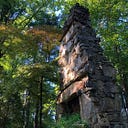Member-only story
Whiteness in Lila Quintero Weaver’s “Darkroom”
A couple of years ago, a student told me about on of her classes where the professor was using Lila Quintero Weaver’s Darkroom: A Memoir in Black and White in the course. The student told me about Weaver’s book, and I immediately became interested in reading it. Finally, I picked up a copy and read it. In Darkroom, Weaver details her family’s experiences during the Civil Right Movement on Marion, Alabama centering on the events of 1965. As well, she chronicles her family’s immigration from Argentina to the United States, and she explores themes such as western ideas of beauty, fear of losing one’s culture, fear of cultural exchange, xenophobia, and more. All of these coalesce in an examination of whiteness, specifically Eurocentric whiteness. Today, I want to look at a couple of sections that highlight this theme in Darkroom.
After detailing the murder of Jimmie Lee Jackson, Weaver discusses Bloody Sunday and the way that the news of the event traveled the globe. In this moment, news crews caught the violence against those who marched from Selma to Montgomery. To represent this, Weaver shows two pages. On the left is Edmund Pettus Bridge and the violence enacted upon that bridge. On the right, she shows the globe with newspapers flying around it. Each paper carries a headline about the event, and Weaver’s narration simply reads, “At last, the world saw.”
